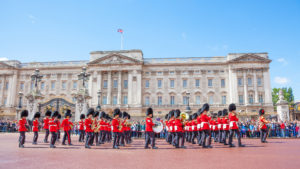
5-Day Awesome Kenya – High End
Days 5 days, 1 country Lodging 3 nights in Hotels, 1 nights in Special Stay Meals 4 Breakfasts, 4 Dinners Transport Pop-up roof 4×4 vehicle
5 days, 1 country
3 nights in Hotels, 1 nights in Special Stay
4 Breakfasts, 4 Dinners
Pop-up roof 4×4 vehicle
Average 38 people
Expert Trip Manager + Driver Team + Local Guides
The Maasai Mara stands as a beacon of unparalleled safari brilliance in the heart of Africa, an enchanting realm that consistently exceeds expectations, leaving our clients yearning for more. Renowned as one of the absolute best safari destinations on the continent, the Mara beckons with its vast landscapes teeming with wildlife and a symphony of untamed beauty. Step into a world where every dawn heralds the promise of extraordinary encounters. The Maasai Mara, a sensory masterpiece.

Days 5 days, 1 country Lodging 3 nights in Hotels, 1 nights in Special Stay Meals 4 Breakfasts, 4 Dinners Transport Pop-up roof 4×4 vehicle

Days 4 days, 1 country Lodging nights in Hotels, 1 nights in Special Stay Meals 4 Breakfasts, 3 Dinners Transport Pop-up roof 4×4 vehicle Group

Days 10 days, 1 country Lodging 7 nights in Hotels, 2 nights in Special Stay Meals 10 Breakfasts, 9 Dinners Transport Pop-up roof 4×4 Mini
Pick up from the airport and driving to Lake Naivasha with a stop by Hell’s Gate. The park, which is mainly, comprised of savannah ecosystem harbors a wide variety of wildlife. There are over 100 species of birds in the park, including vultures, Verreaux’s Eagles, augur buzzard, and swifts. African buffalo, zebra, eland, hartebeest, Thomson’s gazelle, and baboons are also common. The park is also home to klipspringer antelope.
Dinner and overnight. Possibility to upgrade to more luxurious accommodation (at an extra cost) or downgrade to more economic options (price reduction).

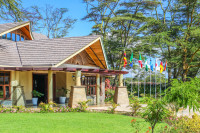

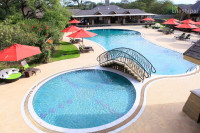 +8Photos
+8PhotosAn early morning pick up then drive to Lake Nakuru National Park, across the equator, southwards of Bogoria, lies the rift valleys most famous lake Nakuru. Known all over the world for its flamingos, it’s alkaline and is recognized as being one of the natural wonders of the world. Lake Nakuru is now a rhino sanctuary, harboring a population of over 40 black and over 60 white rhinos, but the flamingoes, of course, have always been the main attraction. At times there may be almost 2million flamingoes in the residence, forming a stunningly beautiful deep pink band around the edge of the lake shore. Arrive in time for lunch then have an afternoon game drive.
Dinner and overnight. Possibility to upgrade to more luxurious accommodation (at an extra cost) or downgrade to more economic options (price reduction).







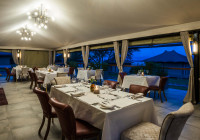

An early morning drive to Masai Mara National Reserve, it holds on as one of the few places left on earth where wildlife still lives comparatively undisturbed, in the numbers that once roamed the plains and forests of Africa. As the northern tip of the vast Serengeti ecosystem, the Mara hosts the spectacular seasonal migration of many thousands of Wildebeest, Zebras and attendant predators. Arrive in time for lunch then have an afternoon game drive.
Dinner and overnight. Possibility to upgrade to more luxurious accommodation (at an extra cost) or downgrade to more economic options (price reduction).
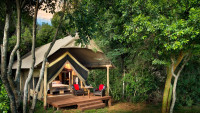


 +9Photos
+9PhotosAfter breakfast we have a full day dame drive, with packed lunch provided. The reserve is well known for its black-manned lion, as well as its abundant resident wildlife and its one of the few places where it’s possible to see the big five during a morning’s game drive. Many of the cheetahs are so tame they seek shelter from the hot sun under one’s vehicle and several even climb onto the roof to get better view of prospective prey. For the bird enthusiast, almost 500 species have been recorded: among these 16 species of eagle, plus many hawks and falcons, 6 species of vultures, 8 species of storks 4 of bustard (including the Kori bustard, the world’s heaviest flying bird), and 9 species of sun birds.
Dinner and overnight. Possibility to upgrade to more luxurious accommodation (at an extra cost) or downgrade to more economic options (price reduction).
We wake up at 6am for a sun rise game drive. At 9am, we drive back to accommodation for brunch then depart for Nairobi. Lunch en-route and arrival in Nairobi at late afternoon.
These popular itineraries can be customized to match your budget and how many people you’re planning to travel with, click on the tabs below to see more African safari destinations




Because you’re not just anyone, you can explore your uniqueness by tailoring your dream trip with an expert travel consultant in four simple steps.

Let our experts know, through email, call or chat, your grand bucket-list attractions, African dreams, expected experiences, and the unique type of traveler you are.

Tailor your holiday safari trip, adding and making little changes to suit your style of travel with your personal safari expert guiding you through the process.

Travel with peace of mind knowing that your personal safari manager is taking care of everything local and will be there when you come.

Even when your trip comes to an end, keep the dreams alive by sharing your experience with our fans and your social groups.
The Rwenzori Mountain Range is a stunning mountain range in Western Uganda that is home to the third-highest peak in Africa, Mount Stanley.
The best time to hike the Rwenzori Mountains is during the dry seasons, from December to February and June to August. During these months, the trails are more accessible, and the views are better
Hiking the Rwenzori Mountains is a strenuous activity that requires a high level of physical fitness. It is recommended that you begin training several months before the trek and consult with a doctor to ensure you are fit for the hike.
You will need to bring appropriate hiking gear, including sturdy hiking boots, warm clothing, rain gear, and a backpack. It is also recommended that you bring your own sleeping bag.
Yes, it is required to have a guide when hiking the Rwenzori Mountains. Guides are trained to navigate the terrain and ensure your safety during the hike.
The cost of hiking the Rwenzori Mountains varies depending on the route and itinerary. However, most treks range from $1,500 to $2,500 per person.
Yes, altitude sickness can be a concern when hiking the Rwenzori Mountains. It is important to take your time and acclimate to the altitude during the trek.
Accommodation during the trek is typically in mountain huts or tents. The huts and tents are basic and do not have electricity or running water.
Yes, hiking the Rwenzori Mountains is generally safe. However, it is important to follow the guidance of your guide and take necessary safety precautions during the trek.






Esco African Safaris is a reputable tour operator and DMC for Uganda, Kenya, Tanzania and Rwanda.
We specialize in offering sustainable Africa gorilla tours and wildlife safaris to our guests.
We operate enriching off-the-beaten-track adventures, wildlife viewing safaris, and gorilla trekking vacations that are tailored to our guests’ interests, travel dates, and budgets.
Our guests trust us to deliver memorable, exciting, and sustainable experiences.
Copyright © 2025 Esco African Safaris. All rights reserved.
WhatsApp us